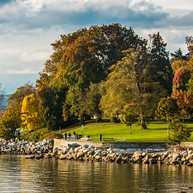
Langkawi
From a backwater peripheral district, Langkawi has now become a major touristic destination, attracting visitors from all over the world thanks to its pristine tropical beaches and natural attractions. In 2008, the archipelago was renamed "Langkawi Permata Kedah", which literally means "Langkawi, the jewel of Kedah" – an appropriate name, given that Langkawi truly is a jewel, a tropical paradise begging to be explored.
Read more



















